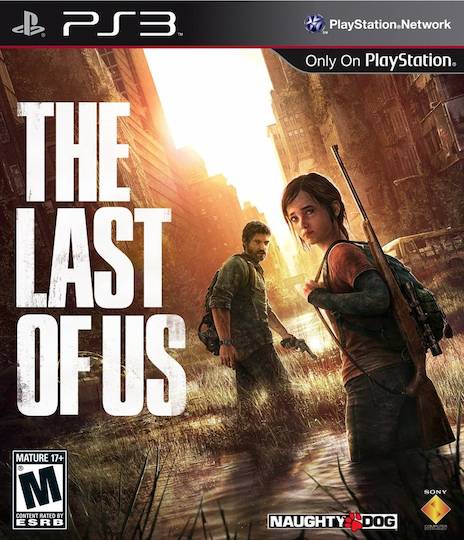Earlier this summer I took the annual trip up to my friend Thomas’s family cottage in northern Ontario. I relished the opportunity to disconnect for a while and enjoy the long weekend without the usual digital distractions. The cottage procedure prescribes reading, swimming, fishing and cooking. After the sun goes down, the card games come out: Hearts and Cribbage are local favourites.
However, this year we were joined by my good friend Sven, an Antiguan foreign student who just graduated from software engineering at Concordia with me. He brought a set of dominoes with him, and thought we might enjoy learning a Caribbean game he had grown up playing. He knew the game only as “Dominoes”, but a little post-trip research revealed it’s commonly known as “Cut Throat”.

Cut Throat derives a great deal of strategic complexity from a very simple ruleset. The game begins by dealing the 28 dominoes evenly to four players. The goal is to be first player to empty their hand. The winner of the previous hand (or the owner of the double 6 tile) plays first, then play proceeds clockwise around the table. A player can only play a domino with an end that matches one of the two open ends of play (there is no branching). If no moves are possible, knocking the table indicates that you are unable to play. In the rare event where no one is able to play, the hand is shut and the player with the fewest total dots in their hand is the winner. The first player to win six hands wins the game provided (here’s the catch) another player has won zero hands.
As a game designer, Cut Throat utterly fascinates me, and not only because it is elegantly simple and a real joy to play. It has certain unusual characteristics that make it unlike any game I’ve ever played, and I have a hypothesis regarding why that might be. Video game bloggers have long discussed how Japanese and American games have distinct regional flavours. If we consider games as cultural artifacts, then logically their mechanics will reflect such roots. Despite my extremely limited knowledge of the region, I’d like to propose the following: that Cut Throat’s unusual characteristics, which distinguish it from more common tabletop games, may be an expression of Caribbean culture.
Despite its simple ruleset, Cut Throat has a rather complex colloquial vocabulary. Of course, it’s not uncommon for unique ad-hoc language to emerge from game communities (the fighting genre in particular). However, the terms in Cut Throat are used less to describe rudimentary mechanics and more to add flavour and commentary to the game. They enhance the experience, rather than merely describe it. Here are a few examples:
- Lie down: To play a double. Since you haven’t changed the state of the board, you haven’t done any work!
- Jail: A player is in jail until he wins a hand. The goal of the game is effectively to keep at least one player in jail.
- Pushing: You are pushing the player to your left. Since you play right before her, you have the most control over how she plays. If you’re making it difficult for her to play, then you are pushing hard.
- Strong Back: Conversely, if you’re being pushed hard but are still able to play then your back is strong.
- Buoy: The player you are pushing is also your buoy. If he gets out of jail, then your buoy has floated away!
- Running From: A player will run from numbers they are unable to play on. For instance, a player with no fours in their hand is running from fours.
- Wash up: To shuffle the dominoes.
- Eat Your End: Late in the game, it’s possible that there’s a tile that only you can play on. This is clearly a very advantageous situation. If you’re forced to play on this end, then you eat your end and negate your advantage.
- Anti-man: At the end of the game, there is one winning player (who won six times) and at least one jailed player (who never won). If the winning player was also pushing a jailed player, then he has played an exceptionally good game. The losing player is then referred to as the anti-man, a slur for homosexual men1.
Cut Throat is a high competitive and energetic game. Indeed, players are encouraged to slam their dominoes on the table if they’re playing well. This aspect of the game is enhanced by this unique vocabulary; with the explanation of each term, Sven described an accompanying emotion. Lying down is cheeky, losing your buoy is stressful, escaping from jail is relieving, and being anti-manned is very shameful. “Washing up” is delegated to the player who was pushing the winner of the hand, because they evidently failed to push hard enough. Furthermore, winning players are permitted to draw from the shuffled pile before those in jail. In Cut Throat, friendly taunting is not only encouraged, it’s intrinsically built into the structure of the game.
Cut Throat has the strongest positive feedback of any game I’ve ever encountered2. You may have noticed, for instance, that the winning player gains an advantage by playing first. However, there is a unique social mechanic that is far more influential. As I described earlier, the game ends in a draw if all four players have won at least once. In order for there to be a winner, there must also be a loser. Therefore, it’s common for the three players with at least one win to conspire to beat the final jailed man. In other words, they team up against the player in last place! This mechanic subverts one of the most fundamental strategies of all multiplayer games: playing to beat the player in first place.
In conclusion, Western and Japanese games tend to include some form of consolation to weaker players, often in the form of negative feedback. They certainly never stack the odds against the weakest player, then proceed to mock him for it. With its extremely strong positive feedback and institutionalized taunting, Cut Throat unabashedly offends these sensibilities. I suspect that this divergence in game design philosophy can be at least partially attributed to cultural differences. The uniqueness of Cut Throat may be an expression of its Caribbean roots. As video game studios continue to pop up all over the world, what new game design paradigms will be revealed?

1 Homophobia is extremely prevalent in the Caribbean.
2 For a quick primer on feedback loops in game design, check out Game Design Concepts.





July 24th, 2010 at 4:49 pm
This style of dominoes is also VERY prevalent in Southern US Black culture. Many of the terms above are also present (minus the nautical and homophobic ones). The game is played to 150 with players scoring in multiples of 5. This leads to a number of terms based on scoring such as “nicks” (5 pts.) and “dimes” (10 pts). Many of the folk i’ve played with get even more creative, referencing pop culture figures to signify scores: “nicolai volkoff” (old school wrestler) for 5 points, or “halle berry” for 20 points (a double dime).
One different term i think you might appreciate is the “Knock”, which signifies that the player is blocked from play and relinquishes his turn. It also has a physical component – a rap on the table with your knuckle.
i agree that cultural influences definitely play a role in game (and technology) design; i wish more folk would call out elements of European culture that structure design instead of just accepting them as ‘normal’.
Thanks for this post!
July 25th, 2010 at 3:18 pm
1) This is fascinating, thanks.
2) I thought I hated dominoes. But now I really want to play Cut Throat.
August 15th, 2010 at 9:25 pm
i enjoy a similiar game. in this version you are allowed to branch out on the first double played only. lead rotates and you score only when the outside “rocks” add up to even incriments of 5. if you recognize the game and know the name please let me know as i would like to play online without personalities playing a part.
thanks